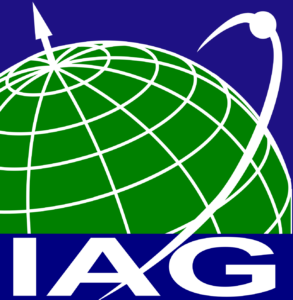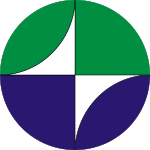SC 1.4: Interaction of Celestial and Terrestrial Reference Frames
Chair: Maria Karbon (Spain)
Terms of Reference
Sub-commission 1.4 focuses its activity on the understanding of the interplay of the reference frames and their auxiliary components; be it at their inception, their dependencies and differences w.r.t. previous iterations or their evolution over time. The final aim is to enable the achievement of the requirements for future releases. The International Terrestrial Reference Frame (ITRF) and the International Celestial Reference Frame (ICRF) and the link between them, expressed by the Earth Orientation Parameters (EOP), are key products of geodesy and astrometry. The demands on all components of this triad are increasing, as the mm/μas level of accuracy is the present goal of the astronomical and geodetic community.
The current method for the ITRS realization is based on a multi-stage processing of observations made with different spatial geodetic techniques, i.e. VLBI, SLR, GNSS and DORIS. The final ITRF is derived from the combination of all four techniques, but not all contribute equally. Most realizations are dominated by GNSS, due to its unrivaled station network and data volume. VLBI and SLR are predominately used for the determination of the scale, and the latter also defines the origin. The current ITRF2020 is based on a combination of the full time series of the station positions and EOP of the four techniques, and the station positions are augmented by PSD (post-seismic deformation) parametric models and seasonal (annual and semi-annual) signals. However, the increased demand on accuracy forces improved station motion modeling and continuous updates.
The ICRS realization on the other hand, is based solely on VLBI. The current ICRF3 features source positions only, predominantly in the X band frequency (8 GHz). In addition, two independent catalogs observed at K (22 GHz) and Ka band (32 GHz) are included as well. The three individual monolithic solutions are aligned to the X band catalog through a match of common sources for the transfer of the datum. The ESA satellite mission Gaia measures the positions of star images relative within its field of view. Hence, the resulting coordinate system of positions and proper motions has to be aligned with the ICRS via quasars that are also visible in the optical frequency range and have an ICRF3 counterpart. Thus, all four frames are determined independently and then aligned to each other through individual sets of datum sources.
The tie between ITRF and ICRF is established through an arbitrary set of reference VLBI stations. At the same time VLBI relies on the ITRF origin as established by SLR, and simultaneously contributes to its scale together with SLR. All techniques contribute to the positions and velocities of the ITRF stations. At the same time, all reference frames inherit the orientation from their preceding realization by applying NNR constraint based on various subsets of network stations or radio sources. Thus, each new frame inherits the orientation uncertainty of all its predecessors and adds its own to it.
The definition of the EOP is based on the transformation between the ICRS and ITRS. However, while a reference frame may remain unaltered for years until a new version is released, EOP are subject to constant change and depend on continuous updates. Further, many applications need accurate predictions. Nonetheless, the EOP must remain consistent with the most recent reference frames. Similar to the ITRF, the individual space geodetic techniques deliver different EOP components with different accuracy, which are then combined in a multi-step process. This combination is linked to the ITRF and ICRF mainly only by the determination process of the EOP within the individual techniques.
Another reference frame that needs to be considered, is the emerging International Terrestial Gravity Reference System and Frame (ITGRF). It is, like the International Height Reference Frame (IHRF), linked to the ITRF via absolute gravity observationsat co-located sites. The consistency between these systems needs to be established and ensured over variouse temporal and spacial domains. As it stands, the realization of a global vertical reference system supporting geometric and physical heights is still in its infancy.
Last but not least, the nacent Lunar Reference Frame has to be taken into consideration as well, as updated localization standards for both surface and orbital activities at the Moon are needed for future exlporation missions.
Objectives
The entanglements between ITRF, ICRF and EOP mentioned above lead to convoluted dependencies and complex interactions between them, which need to be carefully investigated and understood to reach the GGOS goals.
While some improvements may be reached by
- reviewing the theory,
- augmenting the models involved,
- refining and unifying the processing strategies,
other limitations are imposed by
- the technological limitations of the observing systems,
- the systematic errors inherent to them.



